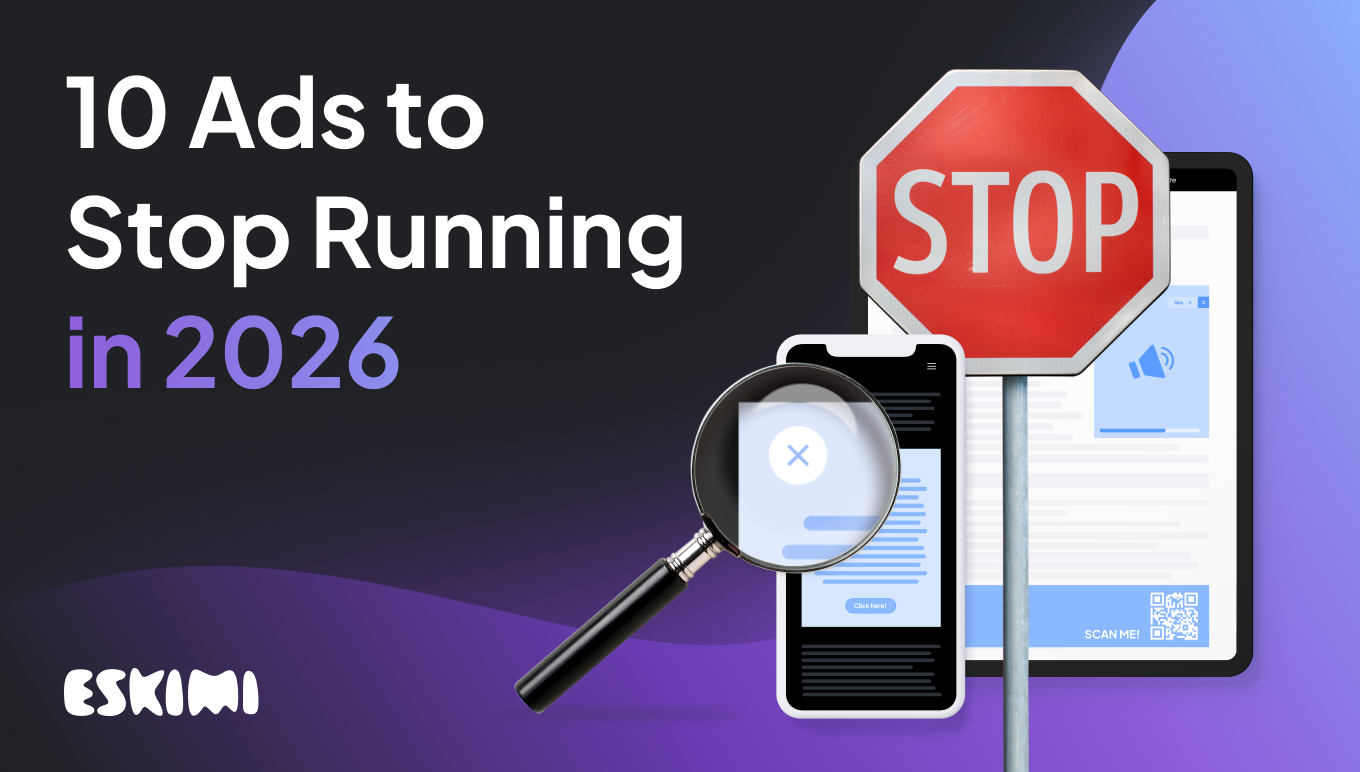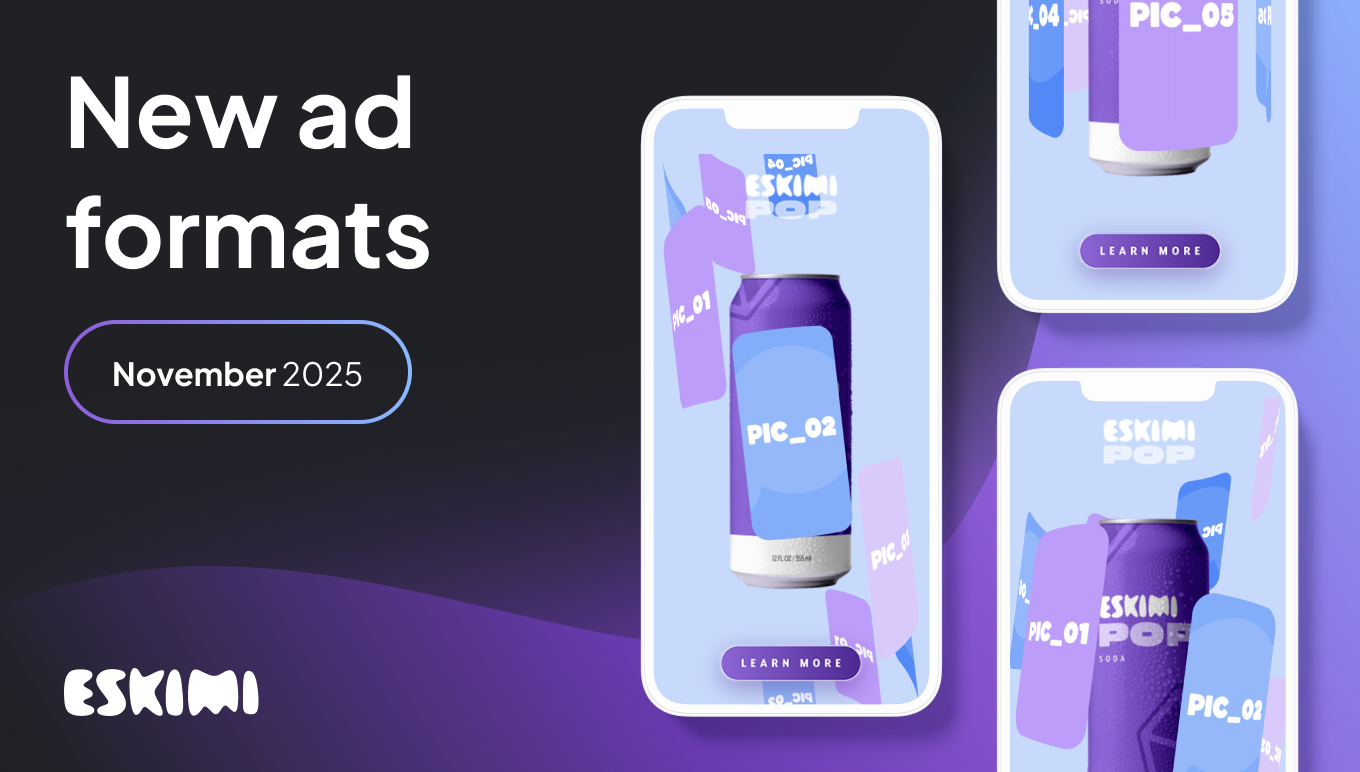CPM Vs. eCPM Vs. rCPM: Understanding The Difference

Whether you’re an advertiser, publisher, or digital marketer, chances are that you might have come across a ton of abbreviations, including CPM, eCPM, or rCPM.
These and similar metrics are commonly used in the online advertising industry to measure the performance and profitability of digital campaigns – some of them are more relevant to the buying (or advertiser) side, and some provide more insights for the selling side, also known as publishers.
However, wrapping your head around these metrics can sometimes seem like a challenge (especially if you’re just starting), and seeing those for the first time might leave you wondering what does that one letter even change…
Turns out, a lot.
Let’s dive in and demystify the differences between CPM, eCPM, and rCPM.
CPM, eCPM, and rCPM defined
Tracking relevant metrics can give you valuable insights and information about your campaign performance or how much you’re earning from your ad placements, depending on what you do.
So it’s crucial to start from the basics and understand the meaning of these metrics before we move forward.
What is CPM?
CPM is a digital metric that describes the price advertisers pay for 1,000 ad impressions on one website or app. Put simply, it’s a method for pricing web ads that relies on impressions.
Let’s deconstruct this sentence real quick:
- M in CPM stands for “Mille," meaning “thousands” in Latin.
- Therefore, digital professionals also refer to this metric as Cost Per Mille or Cost per thousand.
- “Impressions” indicate how many times the ad appeared on a user’s screen, regardless of whether or not they clicked on it.
Typically, CPM is used for display advertising, e.g., banner ads, where the primary goal of the campaign is a large audience reach or better brand awareness. Before launching a campaign, the advertiser agrees on a set price for every thousand impressions they get.
As you might have guessed, CPM is equally important for the buying and selling sides.
How to calculate CPM?
The CPM formula requires you to divide the total cost of the campaign by the number of impressions. You then have to multiply the result by 1,000 to get the CPM rate.

For example:
If an advertiser pays $1,000 for an ad campaign and the ad receives 500,000 impressions, their CPM rate would be:
($1,000 / 500,000 impressions) * 1000 = $2
The number we get, in this case, $2, is the price advertiser pays for every thousand impressions of their ad.
What is eCPM?
Unlike CPM, eCPM is a more publisher-focused metric that is an estimate of the revenue they receive for every thousand ad impressions.
These two metrics are quite similar in terms that they’re both used to define the cost for 1,000 impressions of an ad, but each of them appeals to different sides.
- The letter “e” in eCPM means “Effective,” and the metric is also called Effective Cost Per Mille.
- eCPM measures revenue publishers generate for every 1,000 ad impressions, whether or not an ad is clicked.
eCPM can be used by platforms or websites that monetize through display ads mostly. It’s one of the key metrics that can help publishers identify opportunities to maximize revenue.
How to calculate eCPM?
To calculate eCPM, you need to know the total amount of revenue generated from the ad campaign and the total number of impressions that the campaign received.
eCPM formula requires you to divide the total ad revenue by the number of ad impressions and multiply what you get by 1000.

For example:
If a website generated $2,000 in revenue from 400,000 impressions, the eCPM rate would be:
($2,000 / 400,000 impressions) * 1000 = $5
So this means that for every 1,000 impressions, this website generates $5.
What is rCPM?
rCPM, although important for both advertisers and publishers, is another more selling-side-focused metric that indicates how much ad revenue the publisher generated per 1,000 ad requests.
At this point, we can already see some of you raising your eyebrows or confusingly rolling your eyes, as this sounds very much like eCPM.
Well, yes and no.
- The letter “r” in rCPM stands for “real,” and the metric is also called Real Cost Per Mille.
- Although very similar to eCPM, rCPM has one key difference – while eCPM is calculated based on the cost of serving an ad, rCPM is calculated based on the actual revenue generated from the ad.
In other words, rCPM shows the true value publishers are receiving from their advertising partners.
Since rCPM is calculated based on ad requests instead of impressions, it also takes the fill rate into account.
- Fill rate is a percentage of all of the publisher’s ad requests sold that you can calculate by dividing the number of ad impressions your ad received by the total ad requests and multiplying by 100%, e.g., 500 ad impressions / 1000 ad requests * 100% = 50%.
- Ad request happens every time a website or app calls for an ad.
Ad request vs. ad impression
At this point, it’s important to define the difference between an ad request and an impression.
Put simply, an ad request is a website’s attempt to show an ad to the visitor. This request doesn’t mean that the ad will be automatically displayed on the website or app, but each request is counted every time it’s sent.
On the other hand, an impression is a number that shows how many of those ad requests actually made it to the website/app or appeared on the user’s screen.
Since the rCPM rate is connected to ad requests, it tends to always be lower than eCPM, which considers impressions.
How to calculate rCPM?
To calculate rCPM, you’ll need to know the total number of ad requests and the total number of ad revenue.
You can follow this formula to get the rCPM rate:

For example:
Suppose a campaign on the publisher’s website received 4,000 ad requests in total, the eCPM rate was $5, but ads were displayed only 2,000 times. It means that the publisher sold 2,000 ad impressions for eCPM of $5, which resulted in 10$ revenue.
So the rCPM rate for this campaign is:
($10 / 4,000 ad requests) * 1000 = $2.5
CPM vs. eCPM vs. rCPM: side-by-side comparison

Why are these metrics important?
Essentially, all of these metrics can help you track the progress and performance of ad campaigns, depending on which side you’re on.
Measuring CPM, eCPM, and rCPM allows you to identify whether the ads you serve or ads that are served within your website are effective and bring you the results that you aim for.
For instance, CPM can help advertisers in several ways:
- Predictable costs – advertisers can estimate how many impressions their ad will receive and how much they will need to pay per 1,000 impressions.
- Increase visibility – paying by impressions is a popular method of ad buying, which lets advertisers get a better understanding of how many people are seeing their ads.
- Optimize ad spend – both of the above combined, advertisers can manage their ad spending more efficiently by targeting specific audiences, increasing the likelihood that the right people will see their ads.
Similarly, monitoring eCPM, a more publisher-focused metric, allows the selling side to optimize their inventory and prioritize ad formats and placements that can help generate the highest revenue.
rCPM, on the other hand, is similar to eCPM, but instead of measuring the effectiveness of an ad campaign, it helps to measure the actual revenue generated.
Factors that can affect these metrics
1. Demand
Some metrics highly depend on the demand and supply rule. In this case, the advertising demand primarily affects CPM and eCPM.
It means that if there is high demand for advertising inventory, advertisers may bid more for ad placements, which can increase the CPM and eCPM.
Conversely, if there is a low demand for ad slots, the CPM and eCPM may decrease.
2. Ad placement
Not all ad placements are the same. Ads vary in size, they appear in different places on the page, which can impact their visibility and click-through rate (CTR), and, in turn, can affect rCPM and eCPM rates.
Ads placed on the page more prominently may get more engagement and clicks, generating more revenue per impression than ads placed in less visible locations.
3. Platform or ad network
The advertising platform or ad network that you use to serve your ads can also affect these metrics.
For example, different ad networks may have different levels of advertiser demand, ad formats, or targeting capabilities, which often affect ad performance, therefore, can impact all three – CPM, eCPM, and rCPM.
Wrap up
Whether you’re an advertiser or a publisher, measuring metrics like CPM, eCPM, and rCPM (and using them in conjunction with other relevant metrics) is crucial for understanding the performance and profitability of digital advertising campaigns.
Choosing the right pricing model for your advertising needs can help optimize advertising strategies, drive better results, and improve ROI.
Looking to get started with digital advertising campaigns? Contact the Eskimi team or book a demo to learn more.
Level Up Your Advertising with Eskimi
- Reach 96% of Open Web
- 2,500+ Targeting Options
- 100% Managed or Self-Service
- In-House Creative Studio Team
- Display, Video, In-Game & CTV
- #1 Rated DSP on G2




.png)